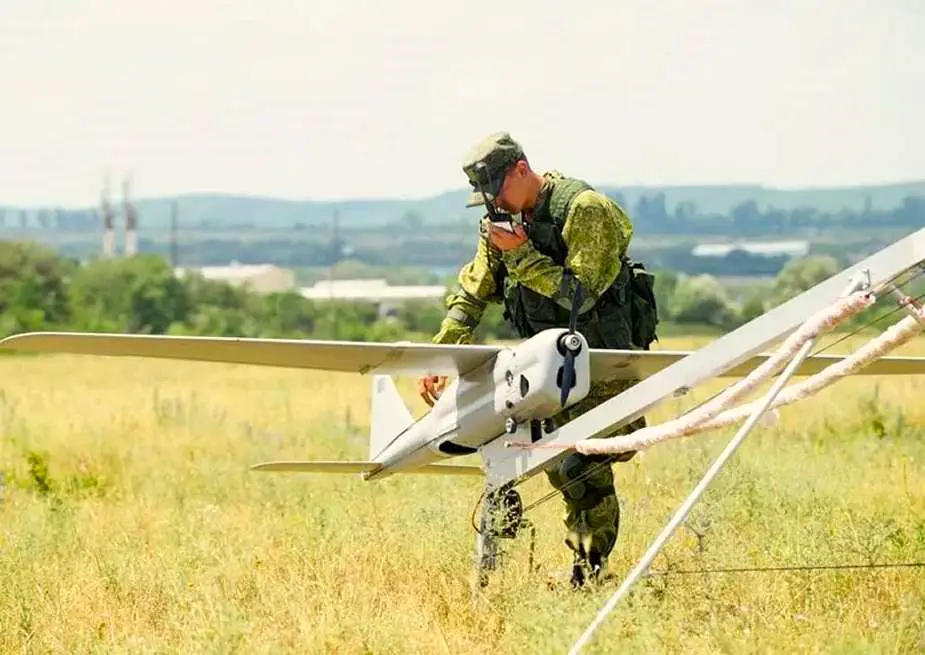Ukrainian intelligence has obtained 100 gigabytes of classified data from the Russian company LLC 'Special Technological Center' located in St.Petersburg, which is involved in the production of 'Orlan' drones used in the war in Ukraine, the Main Intelligence Directorate of the Ministry of Defense of Ukraine reports, echoed by The Odessa Journal.
Follow Army Recognition on Google News at this link
="

The Orlan-10 is a reconnaissance UAV developed by the Special Technology Center (STC) in Saint Petersburg (Picture source: Wikipedia)
The facility produces military equipment and technology used by the Russian army in the war against Ukraine. The 'STC' manufactures various modifications of the 'Orlan' drones, a range of radio-electronic warfare and reconnaissance means, as well as other military products. The company has been under U.S. sanctions since 2016, and in 2022, it faced restrictions in the EU, the UK, Canada, and Japan. In the following year, Ukraine and Switzerland also imposed sanctions against it.
The array of information transferred to the Main Intelligence Directorate of the Ministry of Defense of Ukraine includes documentation for 194 nomenclature units: drawings, technical specifications, patents, software, and more. This includes both existing and prospective military developments. According to preliminary estimates, the value of the obtained data could reach $1.5 billion. The intelligence assures that this is a significant blow to Russia. The mentioned archive is already being used to strengthen Ukraine's defense capabilities and weaken the aggressor state.
"Obtaining classified information from one of the critically important enterprises of the Russian military-industrial complex was made possible through effective cooperation with patriotic representatives of civil society and the media community," added the Main Intelligence Directorate.
The Orlan-10 reconnaissance unmanned aerial vehicle (UAV) features a composite fuselage that reduces its radar signature. These drones are usually deployed in groups of two or three; the first is used for reconnaissance at a height of 1,000 to 1,500 meters (3,300 to 4,900 ft), the second for electronic warfare and the third as a data relay. One system can include up to five UAVs. In 2020, a larger Orlan-30 version was introduced, with a laser designator option to increase the effectiveness of other precision weapons.
The Orlan-10, despite its lack of sophistication, boasts affordability and ease of operation. It operates at an altitude that keeps it out of reach of short-range air defenses while not justifying the use of expensive long-range defenses due to its cost-effectiveness. Additionally, it offers a sufficient battlefield view for target identification.
General characteristics include a payload capacity of 6 kg (13 lbs), a maximum takeoff weight of 15 kg (33 lb), a launch method utilizing a folding catapult platform, and a parachute recovery system. It can withstand launch winds of up to 10 m/s and operates within an operational temperature range of -30 to +40 °C. The powerplant is equipped with a Saito Manufacturing FA-62B single-cylinder four-stroke glow fuel piston engine, delivering 0.71 kW (0.95 hp).
In terms of performance, the Orlan-10 achieves a maximum speed of 150 km/h (93 mph, 81 kn), has a combat range of 110 km (68 mi, 59 nmi), and a ferry range of 600 km (370 mi, 320 nmi). It boasts an impressive endurance of 16 hours and can reach a service ceiling of 5,000 m (16,000 ft).
Regarding avionics, the Orlan-10 is equipped with optical imaging capabilities provided by a Canon EOS 750D/EOS 800D digital SLR camera with an EF 85mm f/1.8 USM lens. It also utilizes thermal imaging technology with the TM2005016-F19 Lynred PICO640gen2 infrared camera [citation needed]. Additionally, it features an FPV camera for enhanced functionality.
Defense News January 2024















